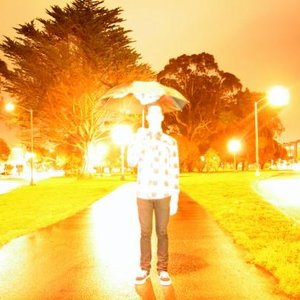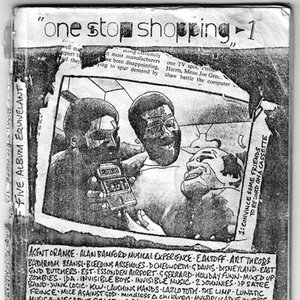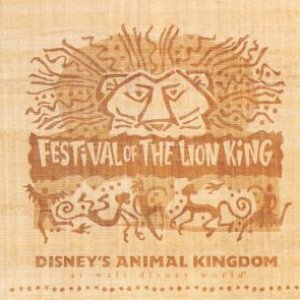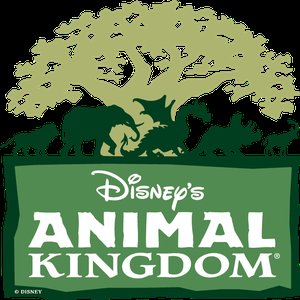Biography
Disney's Hollywood Studios is the third theme park built at the Walt Disney World Resort in Lake Buena Vista, Florida, USA. Spanning 135 acres (546,000 m²) in size, its theme is show business, drawing inspiration from the heyday of Hollywood in the 1930s and 1940s. The park opened on May 1, 1989 and was known as Disney-MGM Studios from May 1, 1989 until January 6, 2008.
Attractions
The park consists of five themed areas. Unlike the other Walt Disney World parks, the Disney's Hollywood Studios does not have a defined layout; it is more a mass of streets and buildings that blend into each other, much like a real motion picture studio would. The layout of the park, however, did have an interesting design characteristic. If you look at an older version of a Disney's Hollywood Studios map and turn it upside down (or look at an old aerial photo oriented due north), you will see a Hidden Mickey in the overall layout of the park. Recent construction and changes to the park have eliminated much of this image.
The park's major attractions are listed below.
Hollywood Boulevard
Hollywood Boulevard is lined with venues selling Disney merchandise and food. This is also the route of the daily Disney Stars and Motor Cars Parade. Michael Eisner, who had a major part in the park's creation ever since the earliest development, demanded the opening land operate on the same principle as Main Street, U.S.A.—a street lined with shops and food, but in a style more fitting to the Studios.
The Great Movie Ride, a dark ride paying homage to several classic films, including Casablanca and The Wizard of Oz. It is located at the end of Hollywood Boulevard.
A.T.A.S. Hall of Fame Plaza, which features busts of past and present icons of the television era, such as Oprah Winfrey and Walt Disney.
Backlot
The park's Backlot section includes the former New York Street set, which was part of the Backlot Studio Tour originally. Now known as the Streets of America, it has been opened to foot traffic and includes additional set pieces representing San Francisco and Chicago.
Action on the set of Indiana Jones Epic Stunt Spectacular!
Sounds Dangerous!, featuring Drew Carey
Finale at Lights, Motors, Action! Extreme Stunt Show
The Twilight Zone Tower of Terror attraction.
Fantasmic! The Earful Tower is visible in the background.Star Tours, a motion simulator ride set in the Star Wars universe.
Jedi Training Academy, a live-action stage show where children are selected to become padawan learners and receive "lightsaber training" from a Jedi master. This show originally was a special event during the annual Star Wars Weekends, but it has since been added to the park's daily entertainment schedule.
Indiana Jones Epic Stunt Spectacular!, a live-action performance showing how movie stunts are done. The show re-enacts various scenes from Raiders of the Lost Ark.
Sounds Dangerous!, a 3-D audio presentation featuring comedian Drew Carey.
Jim Henson's Muppet*Vision 3D, a 3-D movie experience featuring Kermit the Frog, Miss Piggy and other Muppet characters.
Lights, Motors, Action! Extreme Stunt Show, a behind-the-scenes look at how vehicle action sequences are created for films, adapted from a similar show at Walt Disney Studios Paris.
Honey, I Shrunk the Kids Movie Set Adventure, an oversized playground based on the movie Honey, I Shrunk the Kids.
Mickey Avenue
Mickey Avenue runs adjacent to the old Soundstages 1, 2 and 3. It connects the Streets of America to the Animation Courtyard. Currently, a large section of the avenue is closed for construction of the new Toy Story Mania attraction, which will re-open under the name "Pixar Place."
Disney's Hollywood Studios Backlot Tour, showing how movie special effects are created. Guests see a movie scene set on the Special Effects Water Tank filmed using volunteers from the audience and various special effects. The audience sees this final sequence edited all together in an action sequence called Harbor Attack. Guests board trams and are taken through Catastrophe Canyon, to see fire and water effects, and are driven past large-scale movie props. The backlot tour used to include the facades of houses used in hit NBC sitcoms Empty Nest and The Golden Girls as well as The Disney Channel's educational series Adventures in Wonderland. They were torn down to make room for Lights, Motors, Action! Extreme Stunt Show.
Walt Disney: One Man's Dream, a museum-like walkthrough attraction that explores the life of Walt Disney and his legacy through photos, models, rare artifacts and a short biographical film narrated by Julie Andrews as well as archival audio of Walt himself.
Journey Into Narnia: Creating the Lion, the Witch and the Wardrobe, a walk-through interactive attraction featuring props from the movie and an appearance from the White Witch.
The American Film Institute Showcase, a rotating exhibit of movie props and memorabilia.
Toy Story Mania!, an interactive attraction inspired by classic carnival midway games and featuring popular Pixar characters, will open in 2008.
Animation Courtyard
Voyage of The Little Mermaid, a live performance using puppets, lasers, movies, human actors, and water (mist) to re-create the animated Little Mermaid movie, in a condensed form.
The Magic of Disney Animation, a short presentation showing how animated films are made.
Playhouse Disney Live on Stage!, a live performance featuring puppet characters from the Playhouse Disney block of programming on The Disney Channel.
Sunset Boulevard
Sunset Boulevard was the first expansion to Disney's Hollywood Studios, opening in July 1994.
Beauty and the Beast Live on Stage, a stage show featuring highlights of the film.
Rock 'n' Roller Coaster Starring Aerosmith, an indoor roller coaster in the dark with three inversions and a high-speed launch.
The Twilight Zone Tower of Terror, a thrill ride that drops guests in an elevator in a randomized set of four sequences each involving multiple high-speed drops and ascents. In addition, special effects including scents, lighting and sound enhance the experience.
Fantasmic!, a nighttime show with characters and fireworks held in the adjacent Hollywood Hills Amphitheatre.
Production history
The Walt Disney Company's original concept of the then-Disney-MGM Studios was to operate it as a full fledged television and motion picture production facility, not just a theme park. In 1988, among the first feature-length movies filmed at the facility, prior to its completion and opening as a theme park, was Ernest Saves Christmas. When the park opened in 1989, the studio/production facilities housed two major components, the first of which was Walt Disney Feature Animation Florida, where Disney produced a number of projects, including Mulan, Lilo & Stitch, Brother Bear, and sequences from other 1990s-early 2000s Disney animated features. The second, larger, component was Walt Disney Studios Florida, which consisted of three sound stages used for various Disney projects including The Disney Channel's Mickey Mouse Club and Adventures in Wonderland. Several third party productions also used the Studios, including Superboy (first season only, from 1988-1989), Thunder in Paradise, a revival of Let's Make a Deal, special broadcasts of Wheel of Fortune and airplane interior sequences for the feature film Passenger 57. In addition, a number of music videos and several tapings for World Championship Wrestling were also shot there. Even The Post Group had a Florida-based post-production facility located on the Studio lot throughout the 1990s. All these production and post-production facilities were constructed to be an integral part of the theme park's Backstage Studio Tour as well.
During the closing credits of the Mickey Mouse Club (later, MMC in its final seasons) and Adventures in Wonderland, the lit Disney-MGM water tower appeared on the screen and one of the cast said, "(insert show title here) was taped at the Disney-MGM Studios at the Walt Disney World Resort in Orlando, Florida." Disney management (including CEO Michael Eisner) decided to downsize Disney's Florida operations by closing the animation studio, laying-off personnel and then moving the operations to the main animation studio in Burbank, California.
A radio studio is also located on the lot, appropriately behind "Sounds Dangerous". It originally housed the first children's radio network Radio Aahs which rented the studio. Later, Disney founded Radio Disney and essentially drove Radio Aahs out of business. Radio Disney decided it was no longer profitable to operate in Florida so they moved all of their shows from the Disney-MGM Studios to the Radio Disney headquarters in Dallas, Texas and the once bustling Disney Studios Florida radio studios are now used as remote studios for radio shows that are visiting Disney or the Orlando area and need a facility to broadcast from.
MGM litigation and name change
Disney-MGM Studios logo used from May 1, 1989 to January 6, 2008In 1985, Disney and Metro-Goldwyn-Mayer entered into a licensing contract that gave Disney worldwide rights to use the MGM name and logo for a yet-to-be-built backlot studio theme park.
Disney's plans for what became the Disney-MGM Studios theme park at Walt Disney World Resort included working production facilities for movies and television shows and a satellite animation studio, which began operation prior to the park's debut. In 1988, MGM/UA responded by filing a lawsuit that claimed Disney violated the 1985 agreement by operating a working movie and television studio at the Florida resort.
In 1989, the theme park opened adjacent to the production facilities as the Disney-MGM Studios. The only affiliation MGM had to the park was the original licensing agreement that allowed Disney to use the MGM brand name and lion logo in marketing, plus separate contracts that allowed specific MGM content to be used in The Great Movie Ride.
Disney later filed a countersuit, claiming that MGM/UA and MGM Grand, Inc. had conspired to violate Disney's worldwide rights to the MGM name in the theme park business and that MGM/UA would harm Disney's reputation by building its own theme park at the MGM Grand hotel and casino in Las Vegas, Nevada.
On October 23, 1992, Los Angeles Superior Court Judge Curtis B. Rappe ruled that Disney had the right to continue using the Disney-MGM Studios name on film product produced at the Florida facility, and that MGM Grand had the right to build a Las Vegas theme park using the MGM name and logo as long as it did not share the same studio backlot theme as Disney's property. The 33-acre MGM Grand Adventures Theme Park opened in 1993 at the Las Vegas site and closed permanently in 2000.
Disney was contractually prohibited from using the Disney-MGM Studios name in certain marketing contexts like the free Walt Disney World vacation-planning kit; in those instances the park was called The Disney Studios.
On August 9, 2007, Walt Disney World President Meg Crofton announced that the theme park's name would be changed to Disney's Hollywood Studios in January 2008. In announcing the name change, Crofton said, "the new name reflects how the park has grown from representing the golden age of movies to a celebration of the new entertainment that today's Hollywood has to offer—in music, television, movies and theater."
The Florida resort later announced that the new name would be effective January 7, 2008, adding that it would take several more months to change all affected signage
Artist descriptions on Last.fm are editable by everyone. Feel free to contribute!
All user-contributed text on this page is available under the Creative Commons Attribution-ShareAlike License; additional terms may apply.




